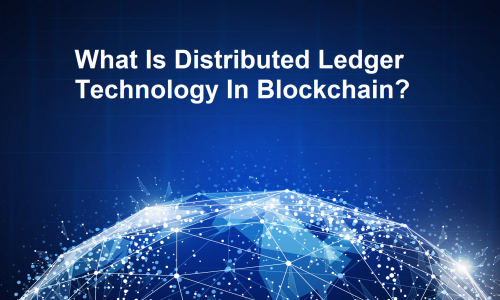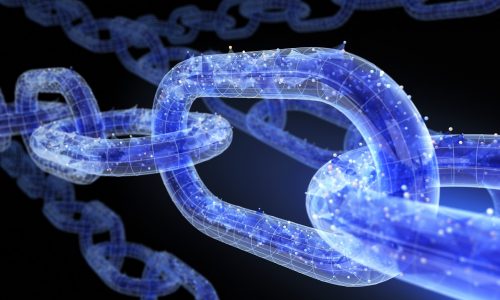
Ontario Conservation Authorities Test Blockchain For Green Energy On Smart Grids
- Uncategorized
- April 5, 2020
While cryptocurrencies are the most talked-about application of blockchain, they are merely the tip of the iceberg. Blockchain, as a technology, has immense potential to revolutionize so many different industries. Research and development teams all over the world are working on cutting edge applications that will redefine the 21st century.
Take for example the energy industry. For the longest time, the world has relied on more or less the same infrastructure for energy systems. There is a pressing need to overhaul the way the world handles energy creation and distribution. Blockchain can play a huge role in supplementing that transformation.
That is exactly what Ontario conservation authorities are looking to do. They are searching for ways to leverage the latest technology to better manage distributed energy resources. And they have logically chosen blockchain tech to do so.
The Collaboration
The Toronto and Region Conservation Authority (TRCA) is taking a forward-looking step. It has chosen to collaborate with the blockchain specialist Insolar to initiate a transformation in the energy systems. On account of this, they are going to conduct a proof-of-concept blockchain project for renewable energy management. Based on the results and findings, they will be taking future decisions.
The TRCA is acting within its scope of Sustainable Technologies Evaluation Program (STEP). The program is a multi-agency initiative that promotes the leveraging of technologies for a variety of important environmental projects. Some of the most important ones are energy conservation, smart grids and renewable energy.
The collaboration with Insolar is all about building a smarter grid and coupling it with renewable energy. In this case, the TRCA specifically wants to use blockchain for the management of distributed energy resources (DERs).
What Are DERs?
DERs are electricity-producing resources. They are connected to a local distribution system or a host facility within the local system. This can be extremely useful to meet excess energy demands in a locality.
As the name suggests, these are distributed resources and include a number of different sources. DERs can be natural gas-fuelled generators, electric vehicles, solar panels, electric water heaters, electricity storage and many more. This is what the future of energy systems look like. Many parts contributing and feeding off of a smart grid.
Ontario’s long-term energy plan includes DERs as an important policy strategy. This will help them close the gap in electricity supply. Doing so is important as the region wants to replace 30% of its power production with renewable resources.
Insolar’s Blockchain Prowess
The global energy landscape is seeing rapid changes due to multiple reasons like climate change. This is where companies like Insolar become so important. The TRCA will use Insolar’s Assured Ledger platform to integrate renewable energy sources into the current electricity system. This will allow them to make DERs scalable. This will finally make them a reliable source of energy, especially during peak times.
Assured ledger provides trusted data exchange for a transactive energy system. This is what will make the DERs scalable in the first place. Once that is achieved, renewable sources can act as a sustainable backup or replacement of the current energy system.
According to STEP technical coordinator Gil Amdurski, “It can connect and aggregate prosumer DERs, enterprise microgrids, and electric vehicles to the grid. Thus, the energy supply from renewables is managed optimally. It can be stored and redistributed when and where it is needed. As part of an integrated transactive energy system, DERs can add much value to community electricity supply”.
It is the ‘trusted data exchange’ part that makes Assured Ledger so important. That’s because blockchain is optimal for securely coordinating the flow and exchange of energy from renewable distributed sources. It is more critical in this case as all this exchange has to happen within the existing power systems.
The blockchain will also allow cool new applications and capabilities. For example, users of electric cars will be able to sell excess solar energy to the grid. If their car is just laying about, it can sell that energy during peak hours. This will also incentivise the car owners to charge outside of peak load times.
However, for the success of this test-bed, Insolar’s blockchain must be reliable, scalable and allow secure automation. Only then will the system help in preventing blackouts, reduction in peak loads, support DERs and minimise costs for customers. This is mission-critical to establish a renewable energy base. After all the entire world is going to make the switch gradually. Canada and its provinces must keep up as well.
Blockchain’s Role In Future Energy Systems
Blockchain’s applications are limited to the developers’ imagination. Just as the internet, they can be adapted to multiple situations to solve complex problems. The world is going to switch to renewable resources within the next 20-30 years. And the process has already begun. This switch will happen in a rolled out fashion. Large changes take time and a lot of effort.
Therefore, blockchain will be even more important. They can serve as the transitional Tsar, serving as a trusted data exchange layer. They can also become central in the energy systems of the future. In the future, grids are no longer going to be a one-way street. They will be transactive, interactive and smart. All of this will require blockchain at its heart to function optimally. Insolar’s Assured Ledger is only a small step in that direction.
In the coming decades, we are going to witness many technological advancements in the blockchain space. This is what may finally help us build a sustainable future. A future where energy is generated, distributed and used judiciously.





